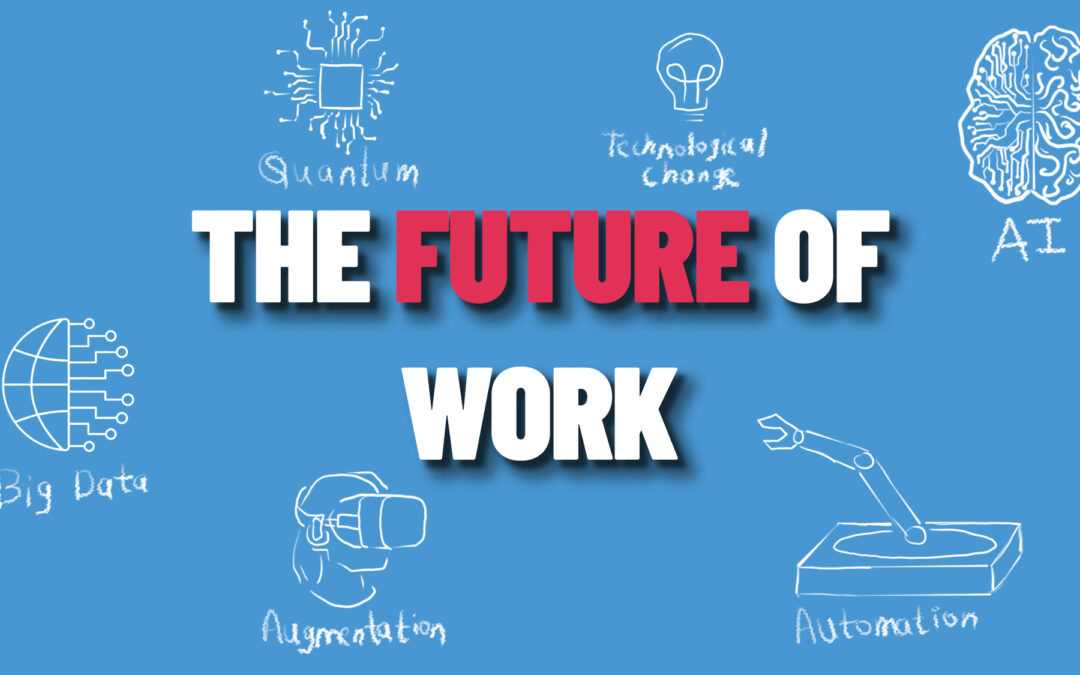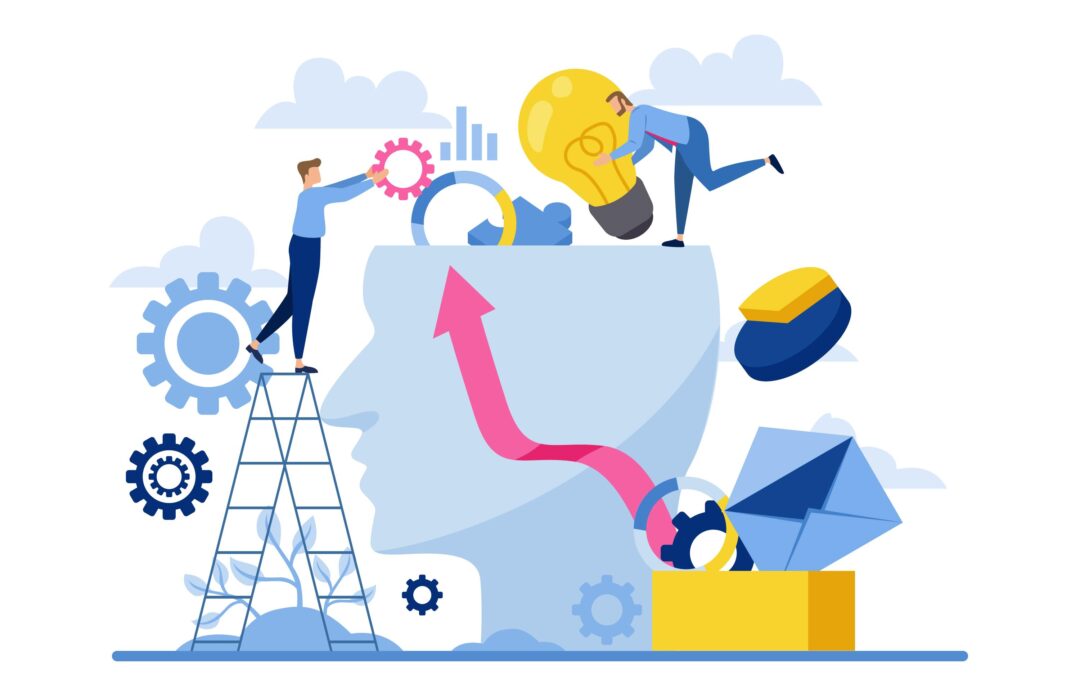
by The Talent Group | May 29, 2025
I recently read the 2025 Jobs Outlook and Unlocking Opportunity report from the World Economic Forum, and let me just say—if you’re not already thinking about how to evolve your skills or help your team transition, you’re behind.
Here’s what stuck with me the most:
👉 Nearly a quarter of the global workforce will need to update their skills to stay relevant.
👉 By 2027, 69 million jobs will be created thanks to technology and automation… and 83 million will disappear.
Let that sink in. We’re not talking about decades from now—we’re talking within two years. The speed of change, especially with AI and machine learning, is unlike anything we’ve seen before. And while the disruption is real, so is the opportunity—if we’re intentional about how we approach it.
The WEF lays out a framework for navigating these career shifts, and honestly, it’s one that every worker and business leader should have on their radar. Here’s the breakdown:
1. Reskilling and Upskilling
The one-and-done degree model is dead. Lifelong learning isn’t just a nice-to-have—it’s mandatory. With 44% of skills expected to change in the next five years, we need to keep evolving. A standout example: Randstad’s boot camp in Japan helps non-technical workers transition into IT roles by giving them real, hands-on digital training. We need more of this, everywhere.
2. Smarter Matching Between People and Jobs
The way we connect workers with work is outdated. It’s time to get smarter. Flexible work, hybrid roles, remote opportunities—these aren’t perks, they’re essential tools to access the right talent. Indonesia’s SMK-PK program is killing it here—realigning vocational training with industry needs and helping young people land in-demand jobs faster. It’s a win-win.
3. Worker Safety Nets
Let’s be honest: job transitions can be messy. And not everyone lands on their feet right away. That’s why solid protections like unemployment insurance, fair severance, and smart reskilling support matter. Germany’s transition away from coal is a blueprint—rather than leaving workers behind, they invested in helping people shift into sustainable roles.
4. Collaboration is Key
No one solves workforce disruption alone. The most progress happens when businesses, schools, governments, and communities work together. South Africa’s Skills Initiative for Africa proves this—by teaming up across sectors, they’re building a young, agile workforce that’s ready for the jobs of the future.
What this means for us?
If you’re a candidate, stay sharp. Stay curious. Don’t wait for a layoff or a burnout moment to figure out what’s next.
If you’re a business leader, your talent strategy better include reskilling pathways and flexible job design. Hiring for potential and training for skill isn’t just thoughtful—it’s a competitive advantage.
The future of work is here—and it’s being built by people who are ready to grow, pivot, and collaborate. If you’re not already making moves, it’s time to start.
Let’s not just keep up. Let’s lead.

by The Talent Group | May 1, 2025
In today’s environment, marketing departments are expected to be fast, flexible, and results-driven—often with leaner teams and tighter budgets. Whether you’re a startup founder building from scratch or a growth-stage company rethinking structure, building an agile marketing team isn’t about hiring quickly. It’s about hiring smart.
As a recruiter who specializes in placing marketing, creative, and media talent, I often help clients think through who they need, why they need them, and when to bring them on board. Here’s a strategic breakdown to help you do the same.
- Start with Strategy First, Not Roles
Before posting jobs or sourcing candidates, zoom out. What are your top business goals in the next 6–12 months? Increased brand awareness? More qualified leads? Expansion into new markets? Your marketing structure should align with these outcomes—not titles that “sound right.”
- The Core Agile Marketing Roles (and What They Do)
Here’s a lean and modern team structure to consider:
- Marketing Strategist or Head of Marketing
Think of this person as the architect. They set the roadmap, tie marketing efforts to business goals, and manage cross-functional coordination.
- Performance/Digital Marketing Lead
Owns paid media, SEO, email, and conversion tracking. This role is key for companies focused on lead gen or ROI-heavy campaigns.
- Content Strategist or Creator
Develops messaging, owns the content calendar, and ensures consistency across platforms. In smaller teams, this may include writing, scripting, and even light design.
- Creative Designer
Essential for brand identity, digital assets, and customer-facing materials. This role is often fractional or project-based in early-stage companies.
- Marketing Operations or Project Manager
The unsung hero who keeps campaigns moving, manages tools (like HubSpot or Asana), and helps teams work efficiently.
- Optional but Valuable: Social Media Manager, Brand Strategist, or Product Marketer
These can often be added as freelance or part-time roles until scale justifies full-time.
- Build for Agility, Not Just Headcount
Agility doesn’t mean hiring more—it means building a system that can adapt. Some tips:
- Think fractional or freelance first. Bring in senior talent on a project or part-time basis to test fit and impact.
- Hire multi-hyphenates. A content strategist who can also write SEO copy or a designer who understands UX can reduce silos and move work forward faster.
- Cross-train your team. Agile teams often succeed when individuals have broad context and aren’t stuck in rigid swim lanes.
- When to Hire vs. Outsource
- Hire full-time: When the function is business-critical, ongoing, and demands deep brand knowledge.
- Outsource or contract: For project-based work (e.g., a website redesign), niche expertise (e.g., paid TikTok ads), or bandwidth issues.
If you’re unsure, start fractional. It’s one of the most underrated and flexible ways to access high-impact talent without long-term risk.
- Final Thought: Hire for Now—but Plan for Later
The best marketing teams aren’t built overnight, but they are built with intention. Whether you’re just starting to hire or need to rethink your structure, make sure your team can evolve alongside your business.
Need help figuring out what kind of talent will move the needle for your company right now? That’s what I do. Let’s talk.

by The Talent Group | Mar 4, 2025
The job market is evolving faster than ever, and staying ahead requires more than just experience—it demands continuous learning. Upskilling isn’t just a buzzword; it’s a necessity for professionals who want to remain competitive and adaptable in an ever-changing landscape.
Companies are looking for candidates who can embrace new technologies, refine their expertise, and expand their skill sets to meet shifting industry demands. In 2025, some of the most in-demand skills include:
Top Skills Companies Are Looking for in New Hires:
🔹 AI & Machine Learning: Understanding how to work alongside AI tools and automation software.
🔹 Data Analysis & Interpretation: The ability to make data-driven decisions is becoming essential across industries.
🔹 Cybersecurity & Risk Management: With the rise of digital threats, companies need employees who understand data protection.
🔹 Project Management & Agility: Experience with methodologies like Agile and tools like Jira, Trello, or Asana.
🔹 Customer-Centric Mindset: Strong interpersonal skills and the ability to enhance customer experience.
🔹 Sustainability & ESG Knowledge: Companies are prioritizing professionals who understand environmental, social, and governance (ESG) factors.
Key Skills Candidates Should Focus on in 2025:
🚀 Tech Fluency: Even non-technical roles require comfort with digital tools, CRM systems, and collaboration platforms.
🚀 Adaptability & Problem-Solving: The ability to pivot and tackle new challenges head-on is crucial.
🚀 Emotional Intelligence & Leadership: Strong communication, empathy, and teamwork skills are must-haves.
🚀 Content Creation & Digital Marketing: Social media, SEO, and storytelling skills are valuable assets.
🚀 Negotiation & Persuasion: Effective communication and strategic influence are key in leadership and client-facing roles.
For job seekers, showcasing a commitment to ongoing learning can set you apart. For businesses, investing in employee development fosters innovation, retention, and a future-ready workforce.
Growth never stops. In a world where change is constant, the ability to evolve is the real competitive edge.
What skills are you focusing on in 2025? Let’s discuss!
#Upskilling #CareerGrowth #FutureOfWork #ProfessionalDevelopment

by The Talent Group | Feb 13, 2025
Panel interviews can be a powerful way to evaluate candidates, but when done poorly, they can feel overwhelming, disorganized, and even intimidating for both interviewers and candidates. A well-structured panel interview ensures a fair, efficient process that gives everyone the insight they need to make a great hiring decision.
Whether you’re bringing together hiring managers, team members, or senior leaders, here’s how to conduct a panel interview that leads to smarter hiring decisions and a better candidate experience.
1. Define the Goal of the Panel Interview
Before you bring multiple people into a room (or a Zoom call), get clear on why you’re conducting a panel interview in the first place. Are you looking for cross-functional input? Evaluating cultural fit from multiple perspectives? Assessing how a candidate handles high-pressure situations?
Once you’ve identified the goal, align with your panelists on what you want to learn from the conversation. Without this clarity, you risk an interview that feels scattered or redundant.
2. Choose the Right Panelists
A strong panel interview includes a mix of perspectives that reflect the role’s key stakeholders. A typical panel might include:
- The Hiring Manager – Oversees the role and evaluates core competencies.
- A Peer or Team Member – Assesses how the candidate would collaborate in daily work.
- A Cross-Functional Partner – Offers insight on how the role interacts with other teams.
- A Senior Leader (if applicable) – Ensures alignment with the company’s broader goals.
Keep the panel size manageable—three to five interviewers is ideal. Too many people can overwhelm the candidate and make the interview feel like an interrogation rather than a conversation.
3. Align on Roles and Questions Before the Interview
One of the biggest mistakes in panel interviews is lack of coordination. Without planning, you risk panelists asking repetitive questions, skipping key areas, or pulling the conversation in different directions.
Before the interview:
- Assign each panelist a focus area (e.g., technical skills, leadership, teamwork).
- Develop a set of structured questions that align with those focus areas.
- Ensure panelists know who will lead the interview and how the flow should go.
This preparation creates a smooth interview experience for the candidate and a more useful discussion for the team.
4. Set the Candidate Up for Success
Panel interviews can feel intimidating, so make sure the candidate knows what to expect. Before the interview, provide details such as:
- Who will be on the panel (names, roles, and how they relate to the position).
- The general structure of the interview (e.g., introductions, Q&A, closing).
- Any special instructions (e.g., if they need to prepare a case study or presentation).
Giving candidates this information helps them feel more confident, which leads to a more natural and productive conversation.
5. Create a Balanced and Engaging Discussion
During the interview, the goal is to make it feel like a conversation rather than an interrogation. Here’s how to keep things balanced:
- Start with introductions. Have each panelist briefly introduce themselves and their role.
- Rotate who asks questions. Avoid one person dominating the conversation.
- Engage with the candidate. Encourage follow-up questions and build on their responses.
A good panel interview should feel dynamic and engaging—not like the candidate is being grilled by a firing squad.
6. Observe More Than Just Answers
A panel interview isn’t just about what a candidate says—it’s also about how they engage with the group. Pay attention to:
- How they handle multiple perspectives. Do they make eye contact with all panelists or focus on just one person?
- Their adaptability. Do they respond well to different questioning styles?
- Their ability to think on their feet. Do they stay composed when challenged with follow-ups?
These observations can provide valuable insights into how they’d perform in a collaborative work environment.
7. Debrief as a Team After the Interview
Once the candidate leaves, don’t wait too long to discuss impressions. Set up a structured debrief to:
- Compare notes on strengths and concerns.
- Identify any patterns in responses.
- Discuss whether the candidate aligns with the team’s needs.
Having a structured evaluation process ensures that feedback is balanced and objective rather than driven by gut reactions.
8. Follow Up with a Great Candidate Experience
Regardless of the outcome, a well-run panel interview should leave candidates with a positive impression of your company. Keep the candidate experience strong by:
- Providing timely follow-ups with updates on next steps.
- Giving thoughtful feedback if they weren’t selected.
- Thanking them for their time—even if they aren’t the right fit, they may be a great match for a future role.
A positive interview experience strengthens your employer brand and keeps top talent engaged.
Final Thoughts
Panel interviews, when done right, offer a well-rounded way to assess candidates while creating a fair and efficient hiring process. By planning ahead, aligning your team, and focusing on the candidate experience, you can ensure your panel interviews lead to better hires—and a stronger, more cohesive team.
Need help optimizing your hiring process? Let’s talk. I can be reached at elyssa@thetalentgroup.net

by The Talent Group | Jan 30, 2025
Hiring is one of the most critical functions of any business. The right hire can propel a company forward, while the wrong one can set it back significantly. Yet, many organizations approach hiring with caution—playing it safe, looking for “perfect” candidates, and hesitating to take chances on unconventional talent.
But what if we flipped the script? What if we embraced fearless hiring—a mindset that prioritizes potential over perfection, agility over certainty, and boldness over hesitation?
What is Fearless Hiring?
Fearless hiring is about making strategic, confident decisions that prioritize adaptability, growth, and cultural fit over rigid checkboxes. It means:
- Hiring for potential, not just past experience. A candidate may not check every box, but their ability to learn and grow can outweigh any gaps.
- Embracing unconventional backgrounds. Some of the best hires come from non-traditional paths, bringing fresh perspectives and unique problem-solving skills.
- Prioritizing culture add over culture fit. Instead of hiring people who simply blend in, fearless hiring focuses on those who bring diverse viewpoints and challenge the status quo.
- Moving quickly. Top talent doesn’t stay on the market long. Fearless hiring means being decisive and acting with confidence.
The Risks of Playing it Safe
Being overly cautious in hiring can lead to missed opportunities and stagnation. Over-reliance on traditional markers of success—like years of experience, specific degrees, or industry tenure—can cause companies to overlook game-changing talent.
Playing it too safe can also result in:
✅ Slow decision-making: Losing great candidates to more decisive competitors.
✅ Lack of innovation: Hiring the same types of people leads to the same results.
✅ Limited diversity: Sticking to rigid criteria often excludes valuable voices.
Real-World Examples of Fearless Hiring
Some of the world’s most successful companies thrive on fearless hiring. Take Google, for instance—they prioritize problem-solving abilities over specific degrees. Netflix hires people who challenge leadership and think differently. Startups often build teams based on raw talent and adaptability rather than traditional credentials.
How to Hire Fearlessly
1️⃣ Reframe “must-have” requirements. Ask: “Is this truly necessary, or can they learn on the job?”
2️⃣ Spot high-potential talent. Look for curiosity, problem-solving skills, and adaptability.
3️⃣ Trust your gut—but verify. If someone excites you, dig deeper into their soft skills, attitude, and drive.
4️⃣ Move fast. If you believe in a candidate, don’t wait—great talent won’t stick around.
5️⃣ Encourage diversity of thought. Bring in people who challenge existing ideas and bring fresh perspectives.
Final Thoughts
Fearless hiring isn’t about recklessness—it’s about having the confidence to take calculated risks and trust in people’s potential. When organizations hire boldly, they unlock innovation, agility, and long-term success.
So, the next time you’re hiring, ask yourself: Are you playing it safe, or are you hiring fearlessly?





